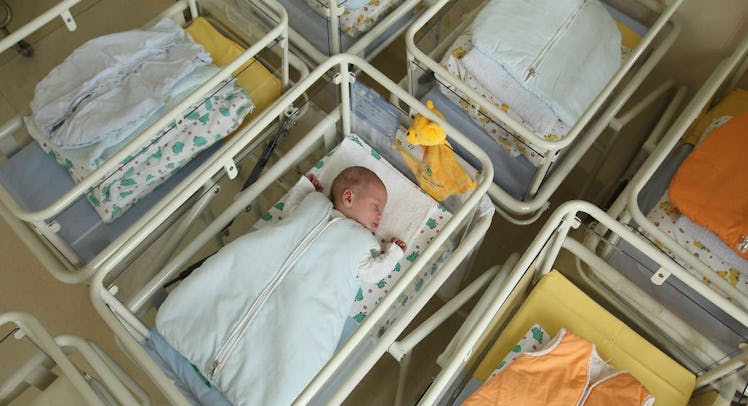The ‘Great Recession’ Just Ended in Maternity Wards
Though birthrates are still declining year to year, over the course of a lifetime it looks like women from all walks of life are having more children.

According to a new survey from the Pew Research Center, American mothers are having more children and family size is increasing after decades of decline. An overall decline in the national birthrate, credited by many scholars and even more commentators to the so-called “Great Recession” that started in 2008, was interpreted by various parties as the emergence of a new normal or as an aberration. It appears to have been a little bit of both. In 2008, the average woman in her early forties had 2.31 children. The new research indicates that number grew to 2.42 children by 2016.
Pew notes that most surveys suggesting that US fertility is in decline frame birth rates on a year-to-year basis. This is interesting because if the recession was responsible for the slump, one might expect year-to-year rates to go down but the number of children had over women’s lifetimes to stay largely the same. And that seems to be more or less what happened — albeit with the wrinkle of some parents likely opting not to have additional kids because of money woes.
Pew is looking at the trend in terms of “lifetime fertility.” For decades women have been having children later in life, largely due to increased participation in the workforce, more years spent in higher education, delayed marriage, and the drop-off in teen births. Looking at the population as a whole, the Pew study says that the percentage of unwed women giving birth went from 9 percent in 1994 to 15 percent in 2014.
This rise in the number of unwed women between 40 and 44 who are having children can be best understood in terms of educational attainment (though this is complicated when women drop out expressly to have kids). The percentage of “never married” women with children and a bachelor’s degree has more than doubled from 12 percent in 1994 to 32 percent in 2014. Replacing the bachelor’s degree with a postgraduate degree and the percentage has increased by more than five times, from 5 percent in 1994 to 25 percent in 2014.
The survey ultimately found that, regardless of marital status or education, women in 2014 were just as likely as women in 1994 to have children during their child-bearing years. While in 2008 the recession-driven “baby slump” was a very palpable phenomenon, a decade later, it looks like women are, you know, back at it.